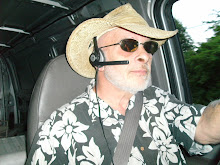The Department of Homeland Security will soon be using a laser at
airports that can detect everything about you from over 160-feet away.
Gizmodo reports
a scanner that could read people at the molecular level has been
invented. This laser-based scanner – which can be used 164-feet away —
could read everything from a person’s adrenaline levels, to traces of
gun powder on a person’s clothes, to illegal substances — and it can all
be done without a physical search. It also could be used on multiple
people at a time, eliminating random searches at airports.
The laser-based scanner is expected to be used in airports as soon as 2013, Gizmodo reports.
The scanner is called the Picosecond Programmable Laser. The device
works by blasting its target with lasers which vibrate molecules that
are then read by the machine that determine what substances a person has
been exposed to. This could be Semtex explosives to the bacon and egg
sandwich they had for breakfast that morning.
The inventor of this invasive technology is Genia Photonics. Active
since 2009, they hold 30 patents on laser technology designed for
scanning. In 2011, they formed a partnership with
In-Q-Tel, a company chartered by the CIA and Congress to build “a bridge between the Agency and a new set of technology innovators.”
Genia Photonics wouldn’t be the only ones with similar technology as
George Washington University developed something similar in 2008,
according to Gizmodo.
The Russians also developed something
akin to the Picosecond Programmable laser. The creators of that scanner
claim that “it is even able to detect traces of explosives left by
fingerprints.”
But what makes Genia Photonics’ version so special is that the
machine is more compact compared to the other devices and can still
maintain its incredible range.
Although the technology could be used by “Big Brother,” Genia
Photonics states that the device could be far more beneficial being used
for medical purposes to check for cancer in real time, lipids
detection, and patient monitoring.




